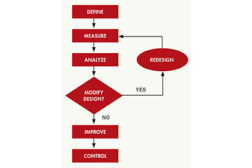Home » Keywords: » DMAIC
Items Tagged with 'DMAIC '
ARTICLES
Sponsored Content
Championing process improvement and waste reduction efforts in the rubber manufacturing field.
Read More
Sponsored Content
Hitachi's Industry Executive Greg Kinsey: Black Belts Can (and Should) Drive the Digital Transformation of Manufacturing
The digital transformation of manufacturing is broadening the toolkit and opportunities for Six Sigma’s DMAIC process.
February 10, 2022
Smart Data Collection is Required for Continuously Improving Your Production Process
More data is not always better.
November 8, 2018
Seven Ways Gage Management Improves Product Quality and Enables Growth
Manufacturers can significantly improve their visibility into operations through gage repeatability and reproducibility (GR&R) studies.
June 8, 2018
How Two Organizations Turned Problems into Opportunities with Lean Six Sigma
By instilling Lean Six Sigma methodologies into their workforces, Ellis Medicine and MC Assembly became continuous improvement organizations.
August 1, 2017
Expanding the Quality Professional’s Role
Quality professionals should be in the culture change business.
May 1, 2017
Face of Quality
Use Six Sigma Selfishly
Quality professionals should apply six sigma to enhance their careers.
May 1, 2016
Six Sigma: A Magic Formula?
IS IT A SILVER BULLET OR JUST ANOTHER VEHICLE FOR CONTINUAL IMPROVEMENT?
November 3, 2014
Stay in the know with Quality’s comprehensive coverage of
the manufacturing and metrology industries.
eNewsletter | Website | eMagazine
JOIN TODAY!Copyright ©2024. All Rights Reserved BNP Media.
Design, CMS, Hosting & Web Development :: ePublishing










